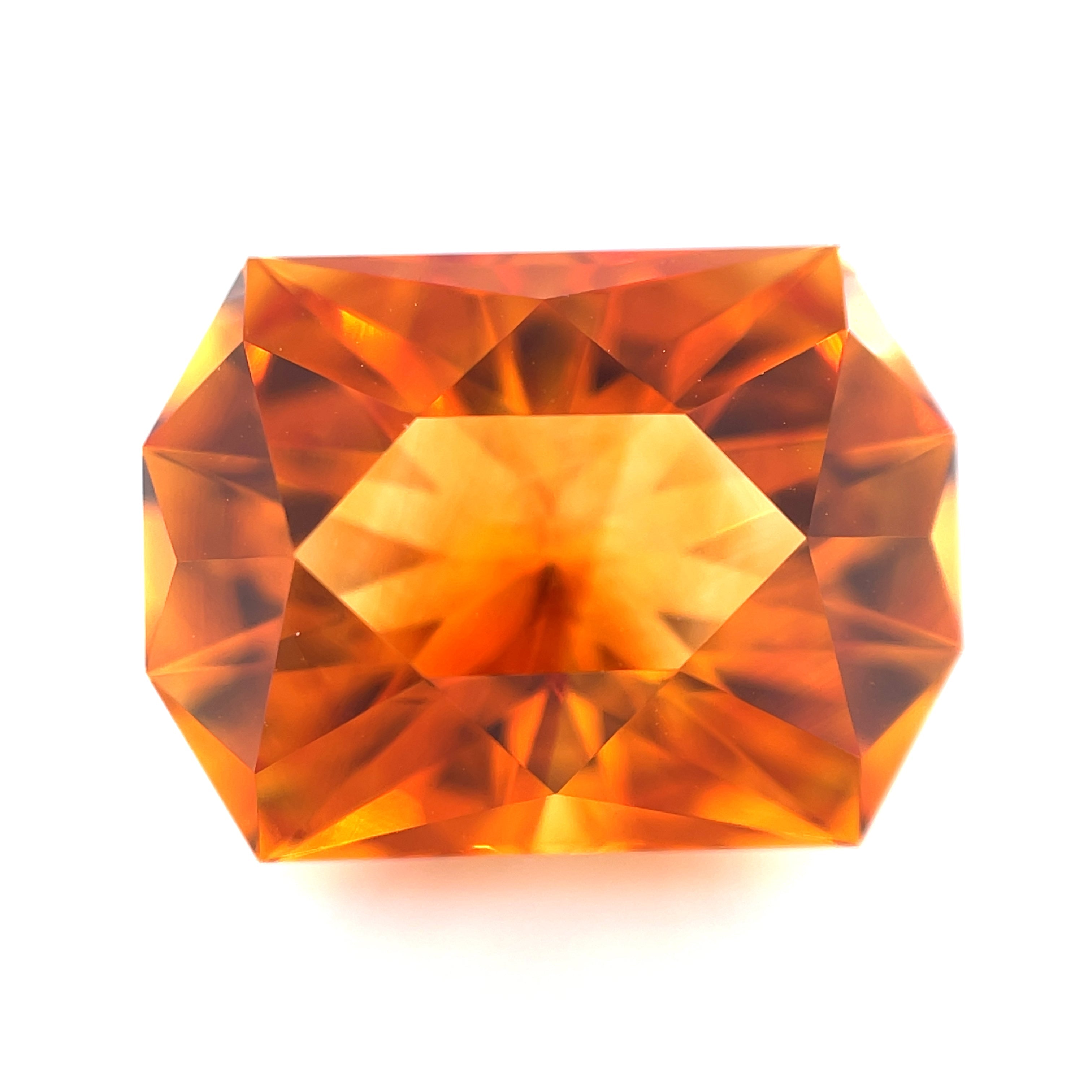

Faceted Citrine - 11.95 CTW
Tax excluded. Shipping calculated at checkout
- Variety - Citrine
- Clarity - Eye Clean
- Dimensions - 16.2 x 12.0 x 10.6 mm
- Weight - 11.95 CTW
- Colour - Orange
- Cut - Excellent
- Shape - Rectangle
- Treatment - Heated
- Origin - Brazil
- Comments - None
- Valuation Certificate from Australia - No
More Information about Citrine
Citrine is a yellow or golden variety of quartz. Most citrine available today is heat-treated amethyst. When amethyst is heated to about 482.2 degrees Celsius, it alters to to a golden tone.
| Name | Citrine |
| Is a Variety of | Quartz |
| Refractive Index | 1.544-1.553 |
| Colors | Yellow to Red-Orange, also deep orange and orangey brown. |
| Hardness | 7 |
| Wearability | Very Good |
| Enhancements | Amethyst and smoky quartz can be heat treated to change them to citrine. "Madeira" citrine with red flashes is a result of heat treatment. |
| Typical Treatments | Heat Treatment |
| Etymology | From the old French citrin, meaning yellow. |
| Inclusions | Natural quartz stones, including citrine, may have liquid, bread crumbs, zebra stripes, two and three phase inclusions, and negative crystals. |
Enhancements
Turning natural smoky quartz and amethyst to citrine via heat treatment usually occurs right at the mine. However, this stable treatment is fully accepted within the gem trade. Colorless quartz stones are also irradiated and heated to produce “lemon quartz,” stones with a neon, slightly greenish yellow color.
Heat treating citrines with the proper iron content creates the prized “Madeira” color. However, no simple way of testing the iron content of citrine exists. Therefore, processors must monitor this treatment carefully.
Sources
Virtually all natural citrines come from Brazil.
Other notable gem-quality sources include the following:
- Bolivia;
- Democratic Republic of the Congo;
- Madagascar;
- Mexico;
- Myanmar;
- Namibia;
- Peru;
- Russia;
- South Africa;
- United States;
- Zambia.
Care
Citrines make durable jewelry stones that require little special care. However, heat-treated stones may fade when exposed to heat. Thus, avoid steam cleaning or boiling your citrine jewelry. Instead, use either ultrasonic cleaning or simply warm water, mild detergent, and a soft brush.
Although usually free of inclusions, citrines with low clarity grades — with liquids, gases, or crystals trapped within them — should be cleaned by hand only. However, any heat-treated citrines are most likely safe to clean in an ultrasonic cleaner.
Choose options


Tax excluded. Shipping calculated at checkout

